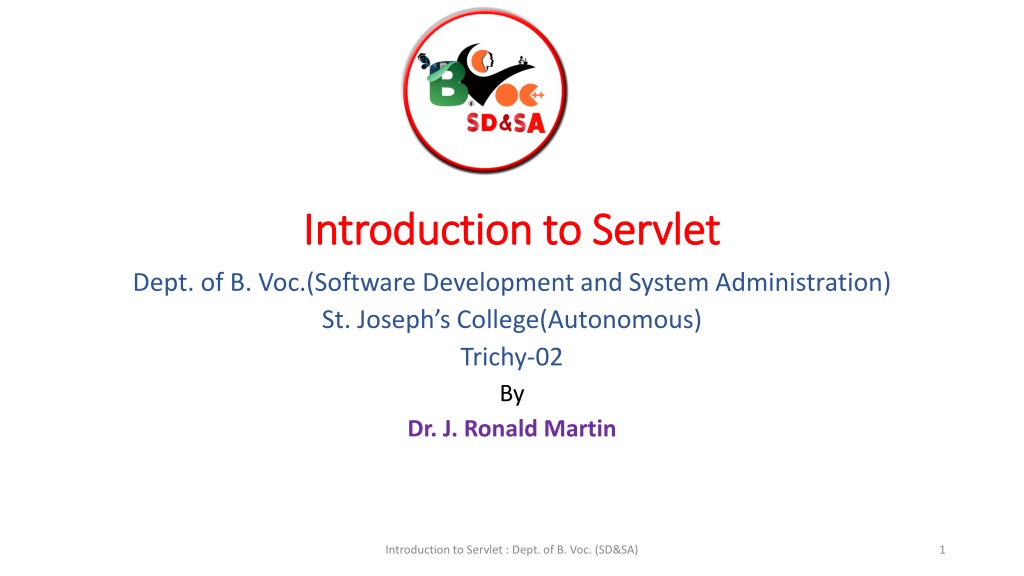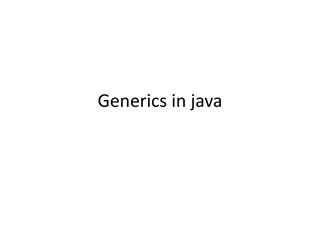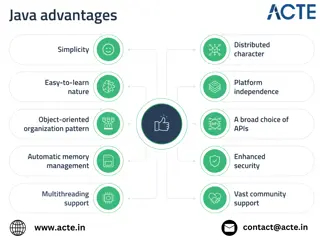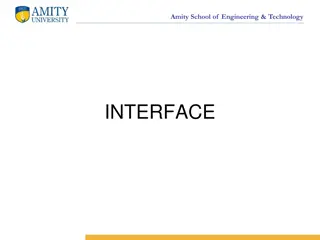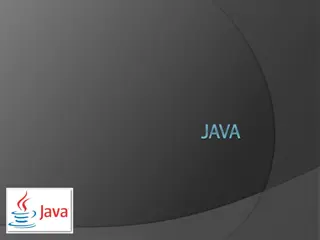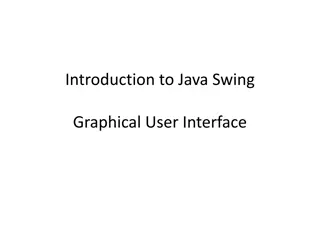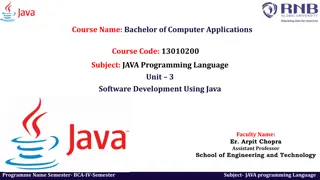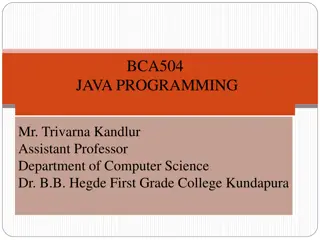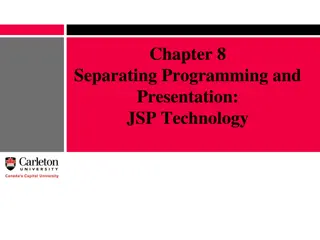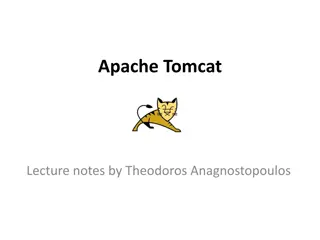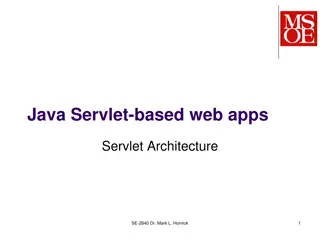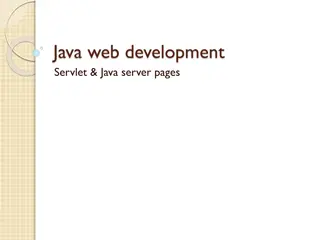Understanding the Life Cycle of Servlet in Java Web Applications
Servlets are essential components in Java web development, running inside the JVM on web servers to handle dynamic web applications. This introduction covers the loading, instantiation, initialization, service handling, and destruction processes of servlets, illustrating a typical life cycle scenario with an architecture diagram.
Download Presentation

Please find below an Image/Link to download the presentation.
The content on the website is provided AS IS for your information and personal use only. It may not be sold, licensed, or shared on other websites without obtaining consent from the author. Download presentation by click this link. If you encounter any issues during the download, it is possible that the publisher has removed the file from their server.
E N D
Presentation Transcript
Introduction to Servlet Introduction to Servlet Dept. of B. Voc.(Software Development and System Administration) St. Joseph s College(Autonomous) Trichy-02 By Dr. J. Ronald Martin Introduction to Servlet : Dept. of B. Voc. (SD&SA) 1
Servlet Servlet is a java program that runs inside JVM on the web server. It is used for developing dynamic web applications. Introduction to Servlet : Dept. of B.Voc SD&SA 2
Life Cycle of Servlet Servlet life cycle contains five steps: 1. Loading of Servlet 2. Creating instance of Servlet 3. Invoke init() once 4. Invoke service() repeatedly for each client request 5. Invoke destroy() Introduction to Servlet : Dept. of B.Voc SD&SA 3
Step 1: Loading of Servlet When the web server (e.g. Apache Tomcat) starts up, the servlet container deploy and loads all the servlets. Step 2: Creating instance of Servlet Once all the Servlet classes loaded, the servlet container creates instances of each servlet class. Servlet container creates only once instance per servlet class and all the requests to the servlet are executed on the same servlet instance. Step 3: Invoke init() method Once all the servlet classes are instantiated, the init() method is invoked for each instantiated servlet. Introduction to Servlet : Dept. of B.Voc SD&SA 4
Step 4: Invoke service() method Each time the web server receives a request for servlet, it spawns a new thread that calls service() method. If the servlet is GenericServlet then the request is served by the service() method itself, if the servlet is HttpServlet then service() method receives the request and dispatches it to the correct handler method based on the type of request. Step 5: Invoke destroy() method When servlet container shuts down(this usually happens when we stop the web server), it unloads all the servlets and calls destroy() method for each initialized servlets. Introduction to Servlet : Dept. of B.Voc SD&SA 5
Architecture Diagram: The following figure depicts a typical servlet life-cycle scenario. First the HTTP requests coming to the server are delegated to the servlet container. The servlet container loads the servlet before invoking the service() method. Then the servlet container handles multiple requests by spawning multiple threads, each thread executing the service() method of a single instance of the servlet. Introduction to Servlet : Dept. of B.Voc SD&SA 6
How Servlet Works? 1) When the web server (e.g. Apache Tomcat) starts up, the servlet container deploy and loads all the servlets. 2) Once the servlet is loaded, the servlet container creates the instance of servlet class. For each instantiated servlet, its init() method is invoked. 3) Client (user browser) sends an Http request to web server on a certain port. Each time the web server receives a request, the servlet container creates HttpServletRequest and HttpServletResponse objects. The HttpServletRequest object provides the access to the request information and the HttpServletResponse object allows us to format and change the http response before sending it to the client. 4) When servlet container shuts down, it unloads all the servlets and calls destroy() method for each initialized servlets. Introduction to Servlet : Dept. of B.Voc SD&SA 8
import javax.servlet.http.*; import javax.servlet.*; import java.io.*; public class DemoServlet extends HttpServlet{ public void doGet(HttpServletRequest req,HttpServletResponse res) throws ServletException,IOException { res.setContentType("text/html");//setting the content type PrintWriter pw=res.getWriter();//get the stream to write the data //writing html in the stream pw.println("<html><body>"); pw.println("Welcome to servlet"); pw.println("</body></html>"); } pw.close();//closing the stream } Introduction to Servlet : Dept. of B.Voc SD&SA 9
